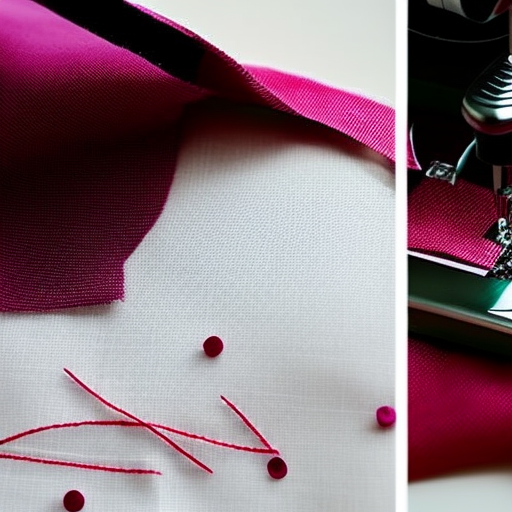Introduction
Welcome to the world of sewing! Learning how to sew can open up a world of creativity and allow you to create unique, handmade items. If you’re a beginner, it’s important to start with the basics. In this article, we will cover some essential sewing techniques to help you get started on your sewing journey.
1. Threading the Machine
Threading your sewing machine correctly is crucial for smooth sewing. Follow the instructions provided with your machine to thread the top thread. Make sure to pass the thread through all the required guides and the tension disks. Insert the bobbin into the bobbin case and thread it properly as well. Remember to always raise the needle to its highest position before threading.
2. Sewing Straight Lines
Mastering sewing in a straight line is fundamental. To start, practice sewing straight lines on scrap fabric using the guidelines on your sewing machine’s needle plate. Use slow, steady pedal control, and gently guide the fabric through the machine. Remember to backstitch at the beginning and end of your seams to secure them.
3. Stitch Length and Tension
Understanding how stitch length and tension work is essential for achieving professional-looking seams. Experiment with different stitch lengths on scrap fabric to get a feel for how it affects the appearance and functionality of your stitches. Adjust the tension settings as needed to prevent loose or tight stitches.
4. Basic Seam Finishing
Seam finishing is important for preventing fraying and giving your projects a polished look. One simple method is the zigzag stitch. After sewing your seam, change the stitch type to a zigzag stitch and sew along the raw edges. Another option is using pinking shears to trim the raw edges in a zigzag pattern. Alternatively, you can also sew a French seam for a clean and neat finish on the inside of your projects.
5. Hemming
Hemming is the process of finishing the raw edges of fabric, commonly used to create a clean and tidy edge on garments or other sewn items. There are several ways to hem, including using a straight stitch, blind hem stitch, or even hand-sewing techniques like slip stitch or blind hem stitch. Practice hemming on various fabrics to find the technique that works best for you.
Conclusion
Learning sewing techniques takes time and practice, but with patience and persistence, you’ll soon be creating beautiful projects. Remember to start with basic techniques and gradually build your skills. With each project, you’ll gain confidence and develop your unique style. So grab your sewing machine, stock up on some fabric, and enjoy the journey of becoming a skilled sewer!





“This is great information! Thanks for sharing.” Great post! Having the right techniques makes all the difference when learning to sew!
“This is really helpful, thanks!”
This is a fantastic resource for anyone just starting out with sewing–it can be overwhelming at first, but having the right techniques makes it much easier. Thanks for compiling and sharing all this valuable information!